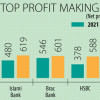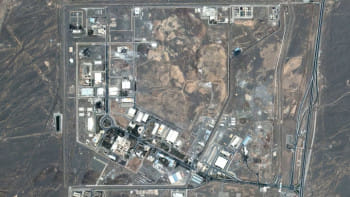Global economy finds new ways to keep growing

The world economy is defying the Cassandras. Despite widespread predictions of a slowdown, global GDP growth is accelerating. The United States is still the star performer but as it flags other regions are picking up the slack. Risks of damaging geopolitical confrontations abound. But for now investors can bask in an ideal economic environment.
"Steady but slow". "Weak pace". "Modest growth". The latest predictions by, respectively, the International Monetary Fund, the World Bank and the Organisation for Economic Co-operation and Development do not make for cheery reading. Their common concern is that the global economy has been unable to regain its pre-pandemic cruising speed. As the World Bank points out, in 2024 and 2025 nearly 60 percent of countries, comprising over 80 percent of the global population, will grow by less than their average rate in the 2010s.
Look under the bonnet of the world's economic engines, however, and the perspective is more optimistic. For a start, global GDP is accelerating. When economists at UBS last tracked 320 monthly data series from 28 economies for April, they found that the global economy was growing at an annual rate of 3.5 percent. If maintained throughout the year, this pace would be faster than the 3.2 percent expansion in 2023 and not far from the 3.7 percent yearly average in the decade before the Covid-19 pandemic struck in 2020.
In practice, such a heady pace is unlikely to last. Nevertheless, it is still a sign of the positive momentum behind global output. Just as importantly, this pickup is taking place as price rises are abating. Median headline inflation peaked at 9.4 percent in 2022 as the health emergency and lockdowns sent prices spiking around the world. But after supply chains, energy markets and consumer behaviour adapted, and central banks belatedly but aggressively raised rates, global inflation is on track to fall to 2.8 percent this year and 2.4 percent in 2025, the IMF forecasts.
The United States is the key driver of these benign conditions. While the other two big engines – Europe and China – sputtered, it was the world's largest economy that provided the thrust. Unlike most other countries, the US has already resumed its pre-pandemic growth trajectory, with GDP expected to grow by 2.7 percent this year, compared with just 1.7 percent for advanced economies, IMF data shows.
This economic feat owed much to the huge fiscal stimulus unleashed by the federal government in the form of corporate subsidies and direct transfers to households. These sustained consumption and corporate investment, helping to keep unemployment low. Admittedly, there are signs this star performer is flagging. US GDP grew at an annual rate of just 1.4 percent in the first three months of the year, while the consumer sentiment index compiled by the University of Michigan is at the lowest point since November 2023.
But the rest of the world seems ready to pick up the baton. Within the 28 economies tracked by UBS, the growth momentum is coming from emerging markets such as India, Turkey and Poland. The domestic economy in these and other countries is providing much of the impetus, as falling inflation and steady job markets are prompting more people to spend. Booming consumer confidence, for example, will power the Indian economy to a 7.2 percent growth rate in 2024 and 6.5 percent next year, according to Fitch economists. That's way above the annual average of 4.6 percent between 2019 and 2023.
Of course, the size of those economies means that their absolute contributions to global growth are relatively small. But there are other positive signs. After economic stagnation caused by high energy prices and a lack of investment, the euro zone is recovering. A survey of 5,000 companies in the single currency area by S&P Global found that their expectations for output growth in the second quarter of 2024 were at the highest in a year. Even China grew at an annual rate of 5.3 percent in the first quarter, much better than the 4.6 percent forecast in a Reuters poll. That solid start was helped by fiscal and monetary stimulus from the government.
To be sure, this hopeful economic picture faces several clouds. Wars in Ukraine and the Middle East have the potential to escalate. The United States could turn more isolationist if Donald Trump regains the presidency.
In the United States, a softer labour market, depleted consumer savings and a ballooning deficit suggest a further weakening in the second half of the year. China's hopes of reaching Beijing's stated target of "around 5 percent" growth in 2024 is threatened by a prolonged property crisis, anaemic consumption and possible trade wars. Meanwhile, the euro zone only managed to grow 0.4 percent year-on-year between January and March. Political instability, as shown by turbulent elections in France, lower fiscal firepower because of rising government indebtedness and weaker exports due to trade issues all limit the region's growth prospects.
For the moment, though, investors are enjoying a near-perfect environment. That's particularly true in developed-market equities. The S&P 500 Index of leading US stocks has returned more than 26 percent in the past year and is touching new highs. In Europe, the benchmark STOXX 600 Index is up nearly 13 percent in the past 12 months. Volatility, a gauge of markets' anxiety over possible reversals, is also at historic lows.
Commodity investors have made nearly 14 percent on their investments in oil since January and a stunning 22.5 percent if they bought silver. Admittedly, bonds have struggled to make money but investors looking for income gains, such as pension funds and insurers, can currently earn a return of nearly 4.5 percent on 30-year US government bonds.
In the long run, the Cassandras may well be right, not least because economic growth will need to remain elevated, or accelerate, if the world is to face up to challenges such as the green transition, the ageing of much of the developed world and dragging people in developing countries out of poverty.
For the time being, however, the world economy is navigating unusually calm waters – and investors have the wind in their sails.

 For all latest news, follow The Daily Star's Google News channel.
For all latest news, follow The Daily Star's Google News channel. 








Comments